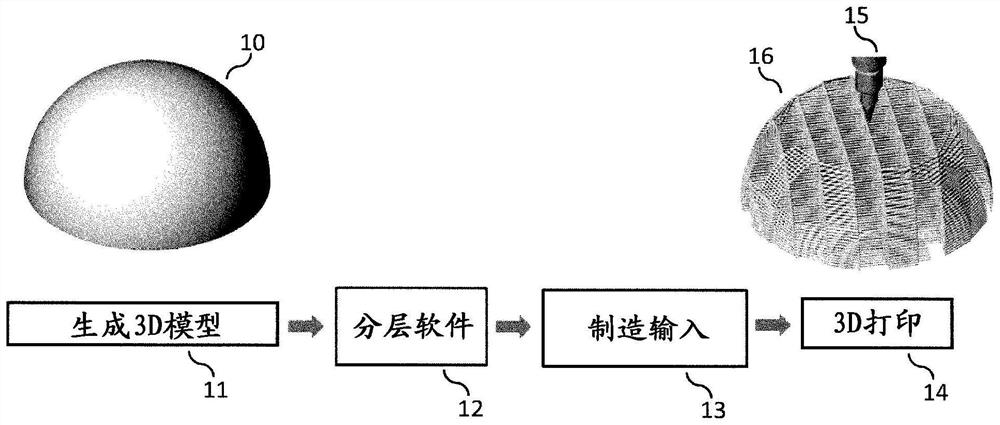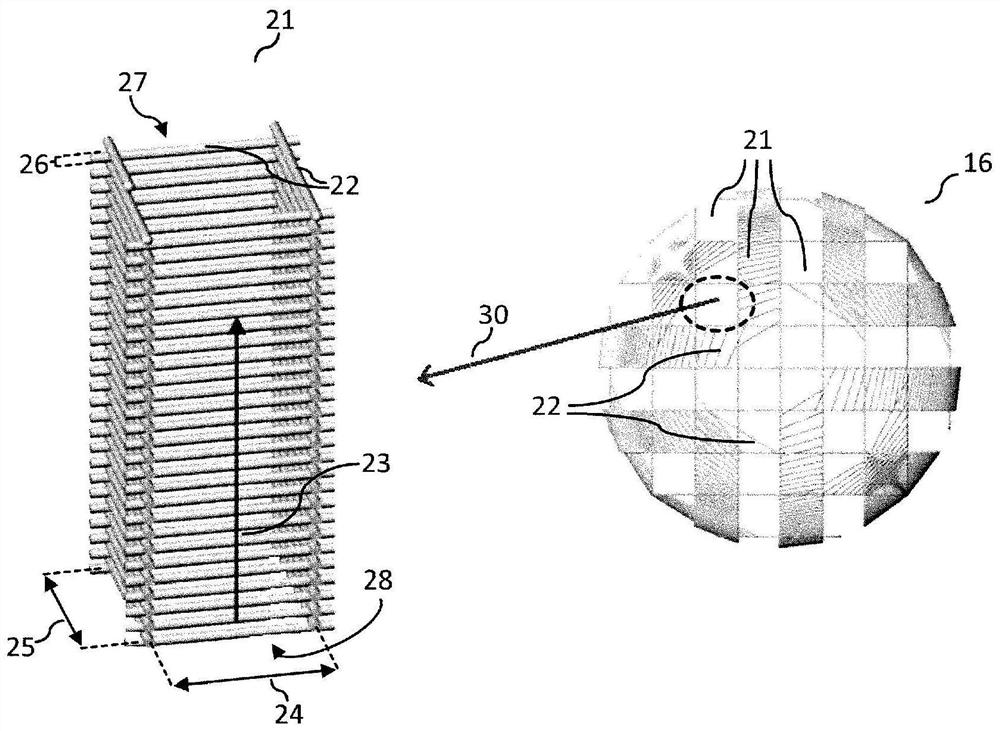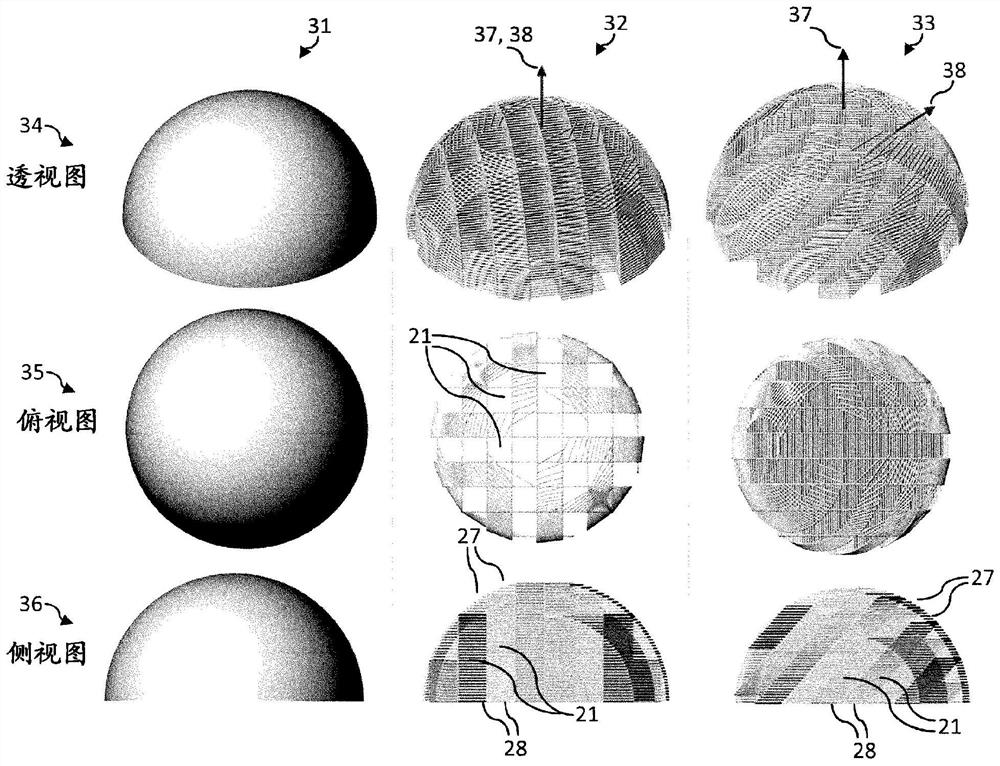3D printed implant with internal channels
A technology of implants and channels, applied in the field of implants, can solve problems such as fat necrosis, reabsorption, and patient safety issues
- Summary
- Abstract
- Description
- Claims
- Application Information
AI Technical Summary
Problems solved by technology
Method used
Image
Examples
Embodiment Construction
[0071] exist figure 1 In, the core steps of the printing process of the 3D implant 16 are outlined. In a first step 11, a 3D model 10 of an implant 16 is designed using computer aided design (CAD) software. At this stage, the 3D model 10 is primarily used to design the external shape of the implant 16 as desired (eg, to size the implant for a particular patient). In a second step 12, the designed 3D model is divided into layers using infill software. The second step 12 can be seen as a transition from the theoretical continuous 3D model 10 to a hierarchical definition of the continuous 3D model. These individual layers are so far undefined with respect to their internal structure (ie, the potential fill pattern for 3D printing of the layer). In a third step 13, manufacturing inputs are generated based on the layered 3D model. At this stage, an appropriate hatch pattern is selected for each layer of the 3D model 10 . The manufacturing input comprises a set of machine instr...
PUM
| Property | Measurement | Unit |
|---|---|---|
| size | aaaaa | aaaaa |
| thickness | aaaaa | aaaaa |
Abstract
Description
Claims
Application Information
 Login to View More
Login to View More - R&D
- Intellectual Property
- Life Sciences
- Materials
- Tech Scout
- Unparalleled Data Quality
- Higher Quality Content
- 60% Fewer Hallucinations
Browse by: Latest US Patents, China's latest patents, Technical Efficacy Thesaurus, Application Domain, Technology Topic, Popular Technical Reports.
© 2025 PatSnap. All rights reserved.Legal|Privacy policy|Modern Slavery Act Transparency Statement|Sitemap|About US| Contact US: help@patsnap.com



